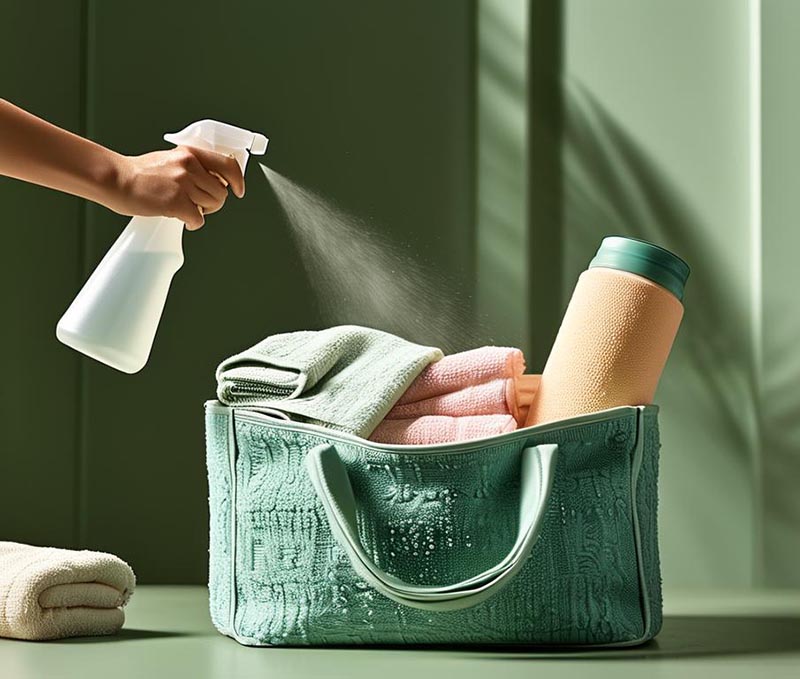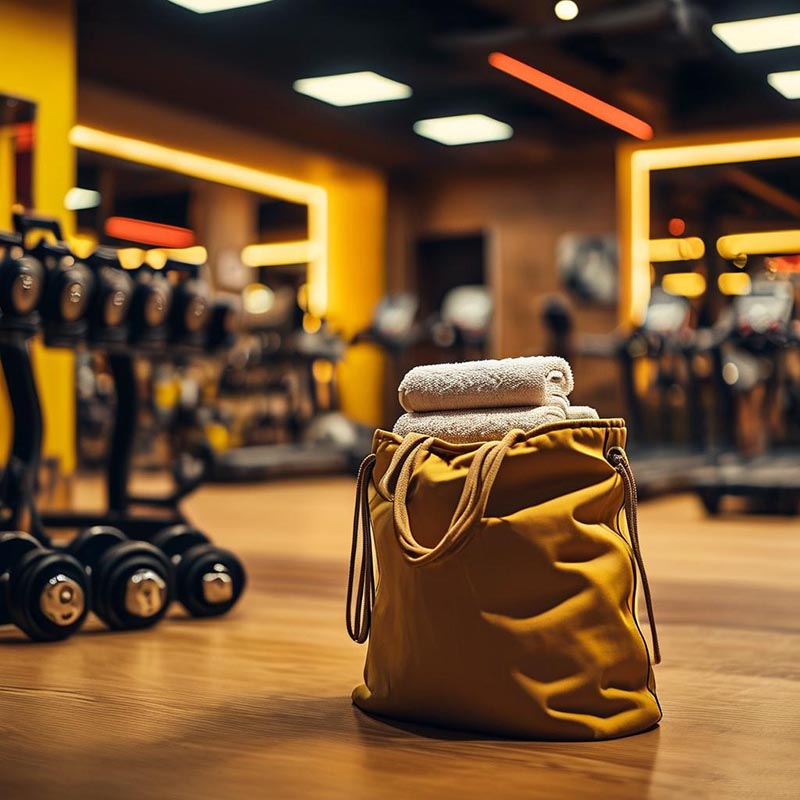From Materials Science to Scenario-Based Mold Prevention: A Systematic Approach
Gym storage bags are high-frequency items used daily by members and are often exposed to sweat, damp towels, and other sources of moisture, making them breeding grounds for mold. Industry surveys indicate that over 65% of fitness facilities encounter mold issues in storage bags each month, leading to leather accessory corrosion, fabric odor, and potential health complaints from users. Traditional methods like mold-inhibiting sprays and increased ventilation often treat symptoms rather than root causes and may carry risks of chemical residues. With the integration of materials science and environmental engineering, modern mold prevention strategies are evolving from reactive treatment to proactive, systemic defense—through base material modification, physical barrier design, and dynamic environmental control—to build a multi-layered protective network that ensures safety and long-lasting performance. This article explores the principles and scenario-specific applications of mold prevention technologies, offering scientific guidance for industry maintenance practices.

Industry Pain Points—Data Visualization
1. Gym Storage Bag Mold Survey Report (Based on 300 Fitness Facilities)
- High-risk Areas: Changing rooms (78%), poolside zones (65%), spinning studios (42%)
- Damage Statistics: Each mold-damaged bag incurs an average handling cost of ¥37.6; annual bag loss rates exceed 15%
2. Root Causes of Traditional Anti-Mold Failures
- Spray-type anti-mold agents lose efficacy in less than 2 months
- Airtight designs trap moisture (peak internal humidity measured at 92% RH)
- Mold commonly originates at seams (63% of initial mold outbreaks)
Five-Dimensional Mold Prevention System
1. Base Protection Layer: Nano-Scale Antibacterial Matrix
- Dual-Component Antibacterial Fibers
- Outer Layer: Silver-ion modified polyester (0.8D ultrafine fibers with 300% increased surface area)
- Inner Layer: Copper-based zeolite coating (Toray Japan technology, JIS L 1902 certified)
- Synergistic Effect: Lab results show a 99.4% antibacterial rate—significantly higher than single-layer structures
- Intelligent Humidity-Regulating Granules
- Embedded diatomaceous earth composite particles at seams (grain size: 0.5–1.2mm)
- Actively adsorb/release moisture to maintain internal humidity at 55–65% RH
- Retain 82% moisture absorption capacity after 50 wash cycles (Test Standard: AATCC 79)
2. Structural Protection Layer: Aerodynamic Design
- 3D Air Circulation System
- Top: Hidden airflow channels (0.3mm depth; air velocity increased by 2.1×)
- Sides: Bionic gill-like vents (40% larger opening area than conventional designs)
- Bottom: Unidirectional drainage membrane (PTFE material; water vapor transmission rate up to 8000g/m²/24h)
- Mold-Blocking Stitching Technology
- Triple overlock stitching (German KANZASHI specialized machines)
- Mold-resistant sealing strips applied at critical points (1.5mm width, tensile strength ≥ 8MPa)
3. Active Protection Layer: Environmental Response Technologies
- pH-Sensitive Anti-Mold Microcapsules
- Automatically release anti-mold agents when exposed to acidic sweat (pH < 5.5)
- Controlled-release period lasts 6–8 months (based on accelerated aging tests)
- Photocatalytic Self-Cleaning Coating
- Surface coated with TiO₂/ZnO composite photocatalyst
- Capable of decomposing organic contaminants under regular gym lighting conditions
Daily Maintenance Plan
1. Factory Pre-Treatment
Each bag is sprayed with food-grade anti-mold liquid (citrus extract formula) before shipping—safe and non-irritating.
2. Usage Guidelines Card
A bilingual care card is included with each bag, recommending that gyms:
- Air out the bag for 2 hours weekly
- Wipe off moisture with a dry cloth promptly
- Clean the inner lining monthly using diluted white vinegar
Cost Control Techniques
1. Budget-Friendly Solutions
For budget-conscious clients, localized mold treatment is recommended—targeting critical areas like bag openings and seams.
2. Reusable Design Features
Replaceable anti-mold inner liners are offered (40% lower unit cost), effectively extending the primary bag’s service life.
FAQs & Contingency Measures
- Handling Moldy Bags: Return to factory for ozone sterilization and refurbishing (service charge = 30% of new bag price)
- Rainy Season Protection: Free seasonal anti-mold patches provided (effective for 3 months inside bags)
- Odor Removal: Bamboo charcoal dehumidifying sachets are recommended (custom gym logo available)
Conclusion
Mold prevention for gym storage bags is fundamentally a systems engineering challenge involving microbial control and environmental management. Experience shows that isolated measures are insufficient in complex real-world scenarios. Only by integrating antimicrobial materials, breathable structural design, and responsive protection technologies can a stable and reliable mold prevention system be achieved.
Current technological breakthroughs are evident in three key areas:
- Nano-antibacterial materials ensure sustained surface purification
- Biomimetic structures resolve humidity accumulation challenges
- Environment-responsive coatings enhance adaptive defense capabilities
Case studies indicate that scientifically implemented mold prevention systems can extend storage bag lifespan by 2–3 times and reduce gym maintenance costs by over 40%. Looking ahead, the maturation of technologies like phase-change temperature regulation and self-healing coatings will further drive mold prevention systems toward smart and adaptive solutions—offering robust equipment protection for the fitness and wellness industry.



 We like to do design according to all the customers' requirements, or offer them our new designs. With strong OEM/ODM capabilities, we can fill your sourcing demands.
We like to do design according to all the customers' requirements, or offer them our new designs. With strong OEM/ODM capabilities, we can fill your sourcing demands.